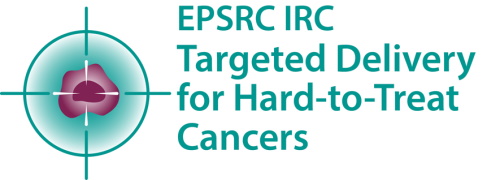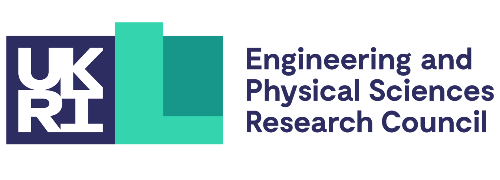Professor Judy Coulson of the University of Liverpool joined forces with the IRC in 2022. Here, she describes the new model her lab has developed for studying mesothelioma, how COVID helped catalyse her partnership with the IRC, and what they’ve achieved together over the past 12 months.
As a cancer cell biologist I’m interested in understanding mechanisms in cells – questions about what goes wrong in cancer at a molecular level and how this affects the biology of cancer cells. Understanding this matters because it enables us to identify better targets for treatment, either with new therapies or by repurposing existing drugs.
Along with other researchers at the University of Liverpool I work on BAP1, a tumour suppressor gene that is often mutated in mesothelioma. We’ve been studying the effects of BAP1 mutation and generating ideas about how we might investigate whether it makes the cancer more or less susceptible to particular drugs.
Mesothelioma is asbestos induced and as part of the government-funded compensation scheme for people diagnosed with the disease resources were made available – via the British Lung Foundation (now Lung + Asthma UK) – for research into mesothelioma. This coincided with the discovery of BAP1 mutations in mesothelioma and our own discovery of new roles for BAP1 , which together led us to focus on this disease.
After working in vitro – using a single layer of mesothelioma cells grown flat in a plastic dish – we needed to move into a more realistic pre-clinical model. Wherever possible, researchers try to reduce, refine or replace the use of the mouse and other animal models. We opted for the hen’s egg model because it’s a good fit for the targets we had identified, and because other groups at Liverpool were working with it too.
Pioneering the hen’s egg model for mesothelioma
The model is based on the so-called chorioallantoic membrane (CAM) – the thin ‘skin’ that encloses the yolk and the white of a hen’s egg. In fact you can see the CAM clearly if you crack a small hole in an eggshell. The CAM has a good blood supply, meaning that when you put cancer cells onto the membrane they recruit the blood vessels to obtain nutrients and oxygen. This then enables the cancer cells to grow into a three-dimensional tumour nodule in much the same way as a tumour might develop in humans.
As well as tapping into the CAM’s blood vessels, which we can then use to deliver chemotherapy agents, the tumour also develops interactions with other cells called the stroma. These have an important influence on how cancer cells behave. All these things make the CAM a more realistic tumour model than in vitro systems.
Despite being a relatively simple model, the CAM has several advantages over the mouse and other mammalian models. Rightly, there are stringent regulations governing the use of mammalian models in research, making them costly and time-consuming. By contrast the hen’s egg model is simple, quick and cost-effective: experiments that might take weeks or months in mouse models take two weeks, which is particularly important in hard-to-treat cancers where progress towards better treatments has been so slow.
First used to study chicken sarcoma cells in 1911, the hen’s egg model has since been developed for research into several human cancers, from melanoma and neuroblastoma to breast, colorectal and pancreatic cancer. Before our work, however, it had been used only once for patient-derived mesothelioma tissue. Thanks to a grant from the NC3Rs (the UK’s National Centre for the Replacement, Reduction & Refinement of Animals in Research) we pioneered a CAM model for malignant pleural mesothelioma*.
Liverpool’s Egg Facility
Although it was developed over a century ago, the hen’s egg model fell out of fashion during the twentieth century. Now, the drive to replace, reduce and refine use of mammalian models has reignited interest in it, with the first International CAM Conference held in 2022 attracting more than 200 participants. The University of Liverpool set up an Egg Facility (CEF) two years ago, which myself and Dr Sarah Barnett have run for the past 18 months. Since then we’ve had increasing interest from researchers wanting to use the facility, or other universities wanting to set up their own facilities.
Cambridge is a major hub for mesothelioma research in the UK and it was during COVID that we first met researchers and clinicians from the IRC. To enable researchers to continue sharing ideas despite lockdowns, the Mesothelioma Research Network held a series of webinars. It was at one of these, focusing on pre-clinical models in mesothelioma, that led Professor Stefan Marciniak to introduce us to other principal investigators at the IRC and together we realised our CAM model would be a useful way to study the novel delivery vehicles the IRC is developing.
It’s our expertise in the CAM model and its use for research on mesothelioma that we bring to the partnership between Liverpool and the IRC, and we’ve been using it to help test new ways of delivering drugs to target cancer cells.
Eggs, hydrogels and MOFs
Since 2022 we’ve been working with Professor Oren Scherman to develop ways of using the CAM model to test his hydrogels as a topical system, and with Professor David Fairen-Jimenez on metal-organic frameworks (MOFs), another delivery system being developed by the IRC. To date, we’ve been ensuring that these delivery vehicles are non-toxic in our model and ascertaining how effective they are at delivering drugs to tumours on the CAM. Over the past year we’ve learned a lot about how to use the CAM to study these novel delivery vehicles.
One of the next questions we want to address is whether we can kill these tumours using drugs encapsulated within the MOFs. It’s exciting research and as well as opening up new ways to treat mesothelioma, we hope the knowledge we gain could also be used to improve treatments for glioblastoma and pancreatic cancer, the other hard-to-treat cancers in the sights of the IRC and which other research groups at Liverpool are already investigating with the help of the CEF.
Science and medicine are collaborative endeavours – we can make progress faster and farther working together than apart. That’s why the IRC’s ever-expanding network of partners is so important, and why we’re optimistic that it will help deliver a step-change for patients affected by the hard-to-treat cancers we and the IRC are working on.



